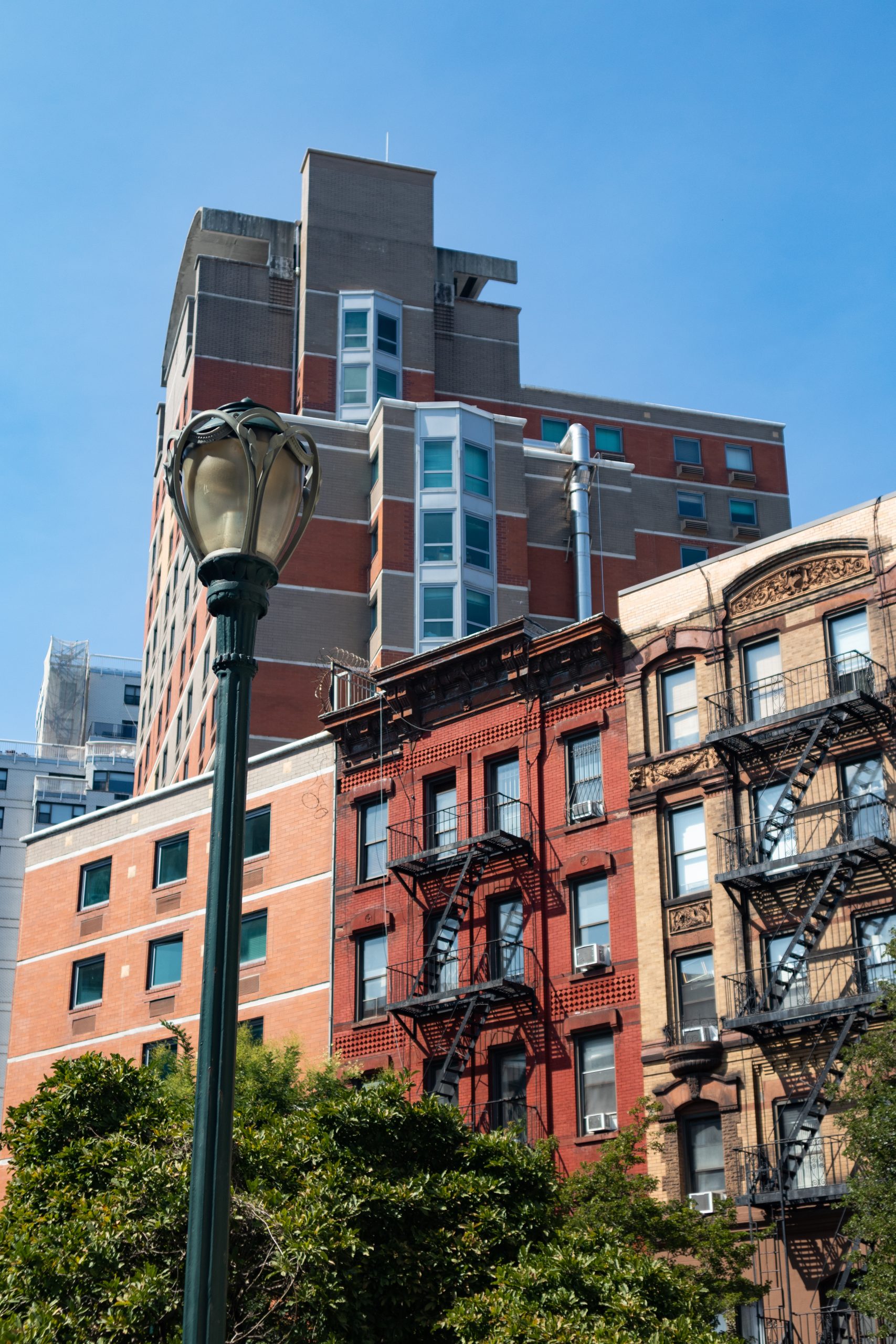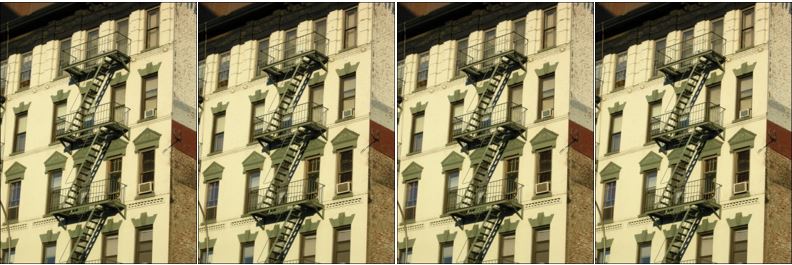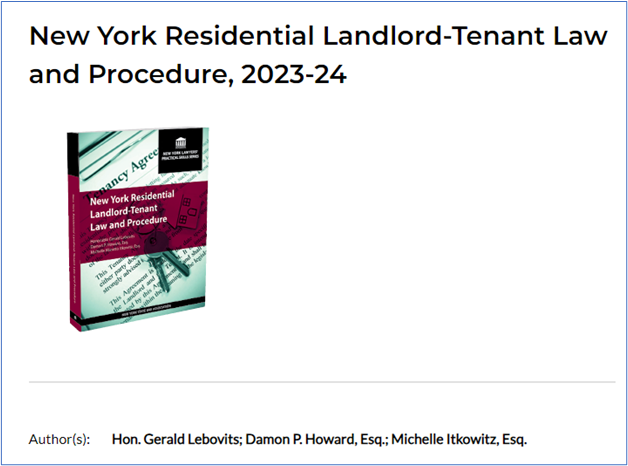Good Cause Eviction is Here!
April 30, 2024
The New York State Legislature passed the Good Cause Eviction Law! This is the most significant change in landlord-tenant law that I have seen in the 30 years that I have been a landlord-tenant litigator in New York City.
Usually, when something huge changes like this, I write a comprehensive article and I put the article on my law firm website. This time, I am going to share my analysis and insights about this historic new development, about the Good Cause Eviction Law, in a series of episodes on the Tenant Law Podcast. Here are the episodes that I have finished so far:
- Good Cause Eviction is Here! (Episode 25) Listen on Spotify, Apple, YouTube or wherever you get your podcasts.
- Are You Covered by Good Cause Eviction? (Episode 26) Listen on Spotify, Apple, YouTube or wherever you get your podcasts.
- Coming Soon: Good Cause Eviction Notice Requirements (Episode 27)
Via this Tenant Law Podcast series on the Good Cause Eviction Law, I will not only be taking you through the new law in great detail, but I will also tell you how different sections of the Good Cause Eviction Law are likely to play out, where the big fights in the courts are going to be, and where the new law falls short of its goals or leaves us with unanswered questions.
The balance of this blog post is the introduction that I wrote for the Tenant Law Podcast Good Cause Eviction Law Series:
First, as always, let me give you some context. In New York State, we have a statutory system called the Rent Stabilization Law. If you are Rent Stabilized, that means that your rent can only go up by small increments governed by certain rules and you cannot be evicted unless there is a good reason for your eviction (such as you are not paying the rent without justification, you are violating the lease, or you are committing nuisance). Rent Stabilized tenants have extra methods for enforcing their housing rights available to them at the New York State Division of Housing and Community Renewal. Rent Stabilization applies to about one million apartments in New York City and was enacted in the early 1970’s.
But that still leaves another one million apartments which, up until April 20, 2024, were considered what we call “free market”. In a free market apartment, the landlord can raise the rent as much as it wants to and can freely evict a tenant. Now that does not mean that there are not certain protections in place that slow down the process of eviction for free market tenants. For example, the landlord cannot evict a free market tenant for a discriminatory reason. And there are notice requirements before a landlord can terminate a month-to-month tenancy or raise the rent more than 5%. Also, a landlord cannot attempt to evict a free market tenant in retaliation for the tenant complaining about bad conditions in the apartment. But those protections for free market tenants do not amount to what Rent Stabilized tenants have, i.e., an apartment that you cannot be evicted from as long as you pay the rent, which only goes up by so much.
In other words, up until April 20, 2024, about half of the tenants in New York City were basically protected from eviction without cause, and about half were not. Enter stage right…Good Cause Eviction. Now many (certainly not all) free market tenants have been converted into what I am going to call “Good Cause” tenants. And now these Good Cause tenants have a type of protection against certain rent hikes, and they can only be evicted for good cause.
Let us digress and cover one more category of housing before we begin discussing Good Cause Eviction apartments. Again, we are trying to put this new law in context. There is a large category of tenants in New York City who are in affordable housing. In that category, I am putting anybody who is in the New York City Housing Authority, which has about 40,000 apartments, or anybody who is in any kind of private government subsidized project where the housing is needs-based. Eligibility for that housing depends on a tenant’s income and assets being below a certain threshold. That is a huge distinction because Rent Stabilization and Good Cause Eviction are not needs-based.
But the commonality of not being needs based, providing protection from eviction without good cause, and providing a limit on rent increases upon lease renewals is where the similarities between Rent Stabilization and Good Cause Eviction end. For now, suffice it to say that the Good Cause Eviction Law is an entirely separate law from the Rent Stabilization Law. And the differences between the two statutory systems are profound.
The best way to think about it is like this. We now have five major categories of rental apartments in New York City. There are more than five types, but these are the biggies, and I’m just trying to give you a way to put Good Cause in perspective. Here are the five big categories of housing in New York City:
- Free Market
- Rent Stabilized
- Affordable
- Coops
- “Good Cause Eviction Apartments”
Thus, the new kid on the block of these five types of housing is Good Cause Eviction Apartments. We need to start learning about Good Cause Eviction Apartments because they are an entirely new thing.
There are two major aspects to every regulatory law. First, you need to know what the law does – What does it prevent? What does it require? What protections does it give you? What restrictions does it put upon you? That is what we cover with respect to Good Cause Eviction in Episode 25 of the Tenant Law Podcast. Second, you need to know if the law applies to you; Does the Good Cause Eviction Law cover you, and if so, why? If not, why not? Are you sure it does not cover you?? That is what we cover with respect to Good Cause Eviction in Episode 26 of the Tenant Law Podcast.
As discussed above, there is more coming on this topic in the Tenant Law Podcast Good Cause Eviction Law Series. As I say at the end of every episode: “Remember New York City – the law belongs to you. But your ownership of the law is only as great as your understanding of the law. So, let’s learn, to live better!”
Respectfully submitted,





